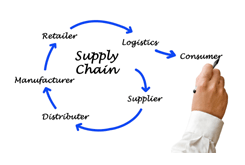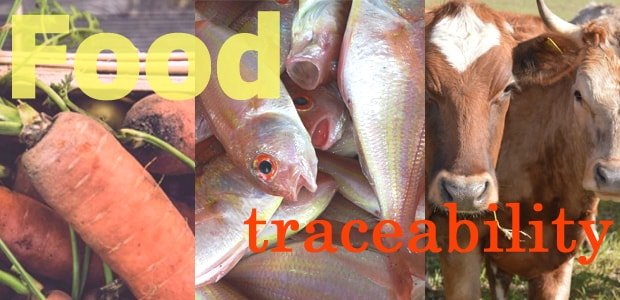There’s more to it than just food safety
Traceability means the ability to record, track and verify a product’s history and location as it moves through a supply chain.
Technology such as barcodes or RFID tags along with traceability software systems make tracing almost any product possible. However, there are unique challenges and demands associated with tracing a food product from farm to table which makes food traceability a complex part of the industry. In their simplest form food traceability systems are inventory and record-keeping systems. While a system can be engineered using a spreadsheet and a pad of paper the reality is that in today’s modern industry systems are becoming extremely complex as they rely on technology and software that represents a significant cost to companies.
Complex systems have many objectives but the three primary reasons companies build these systems are:
- To comply with a growing body of laws, regulations and guidelines aimed at keeping the food supply safe and secure
- To gain business efficiencies
- To respond to changing consumer trends and demands
Food traceability systems should be able to access information about all the ingredients of a food product (down to the individual batch or lot of the ingredient) and allow companies to understand the disposition of all the ingredients and intermediate materials within a production process. It also includes being able to pinpoint where any particular product is located in the supply chain at any particular time. Traceability is a crucial component of the food safety system and is governed by legislation that includes the Food Safety Modernization Act and the European Union’s General Food Law.
Food tracing systems allow corrective actions to be implemented when a potential safety or security problem is identified. A key goal of food traceability is to be able to quickly isolate and prevent contaminated products from reaching consumers and from causing risks to public health. All food businesses including producers, retailers and importers must be able to trace products through the food chain.
 Product tracing encompasses traceback and traceforward. ‘Traceback’ is the ability to trace a food product from the retail shelf back to the source and ‘traceforward’ is the ability to trace a food product from the farm forward to the retail shelf or foodservice outlet. As the food supply chain becomes more globalized it becomes a complex web. Weaved through this web are varied state, Federal and international regulations and standards that food companies must adhere to. Their ability to ascertain the origin of products and ingredients from the farm through food processing to retail, foodservice and the consumer, depends upon effective food traceability systems.
Product tracing encompasses traceback and traceforward. ‘Traceback’ is the ability to trace a food product from the retail shelf back to the source and ‘traceforward’ is the ability to trace a food product from the farm forward to the retail shelf or foodservice outlet. As the food supply chain becomes more globalized it becomes a complex web. Weaved through this web are varied state, Federal and international regulations and standards that food companies must adhere to. Their ability to ascertain the origin of products and ingredients from the farm through food processing to retail, foodservice and the consumer, depends upon effective food traceability systems.
Food tracing systems get tested during product recalls. According to the Grocery Manufacturers Association the the average cost of a recall to a food and consumer product company is $10 million in addition to brand damage and lost sales. When a crisis hits a company they need to rely on their traceability systems to be able to quickly identify the product, which lots are involved, where they were shipped and where they are now.
Beyond managing recalls however the industry gains efficiencies related to productivity, cash flow improvements, innovation, and reducing waste. Since traceability requires all companies in the chain to be ‘on the same page’ it helps to improve communication between and among suppliers. Improved communication means improved efficiency. In an industry of razor thin margins the ability for companies to identify where their products are, how much they have and streamline inventory control can be the difference between success and failure.
Another factor that contributes to the need for modern tracing systems is the fact that consumers expectations about food are changing. Increasingly, consumers want to know which ingredients are in the food products they buy and from where those ingredients come. Health and wellness trends impact purchasing decisions as much as taste and price. Preferences such as gluten free, zero trans fat, and genetically engineered foods have consumers scouring the Internet and examining labels to verify claims. The label and any claims made must match what is in the product. Manufacturers and retailers need traceability to offer accurate and precise information to consumers.
Developing these systems is just a part of broader subject of food safety management. As the industry becomes more tech-savvy companies will need to invest complex systems in order to stay competitive in the marketplace and to stay in compliance with a dizzying array of laws and regulations. We’ve gathered some resource links to provide more information:

